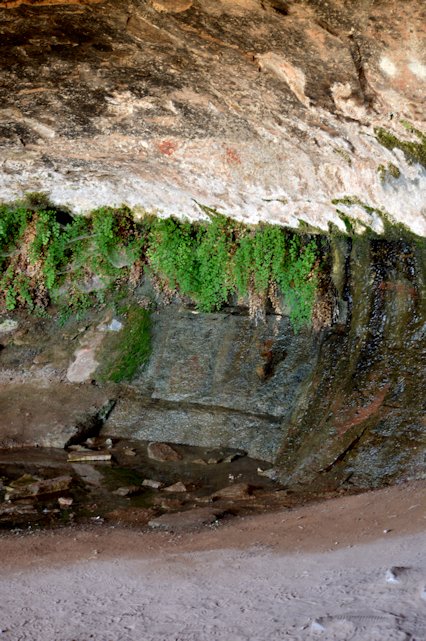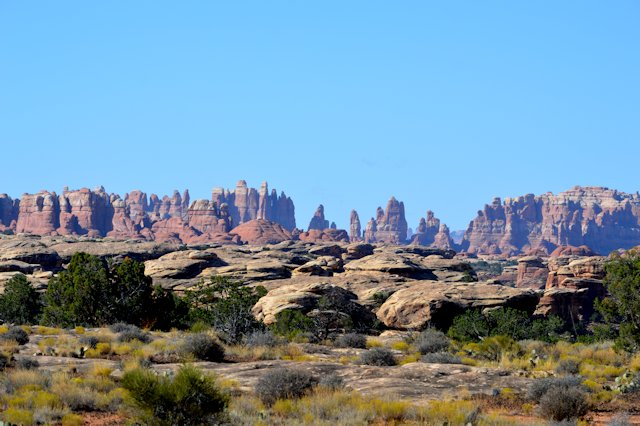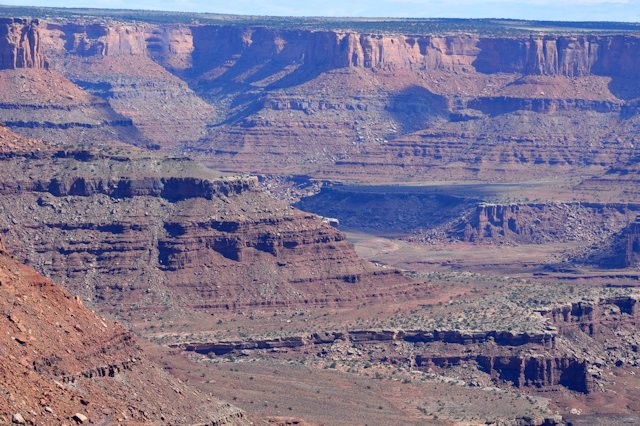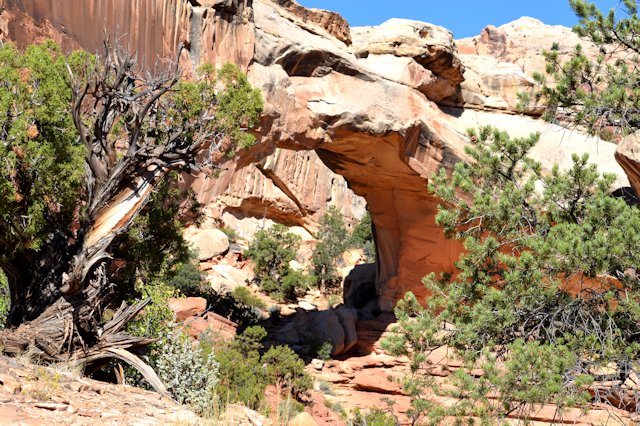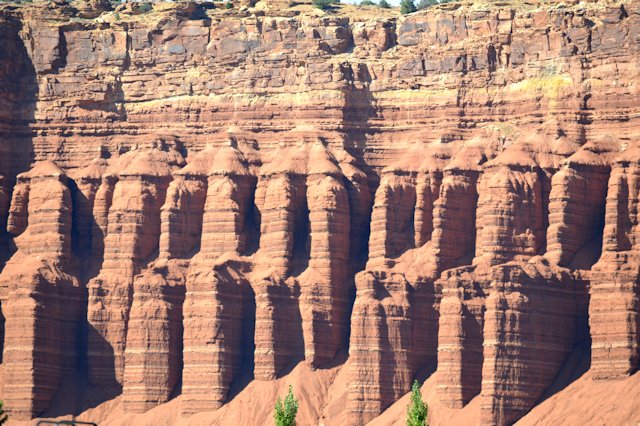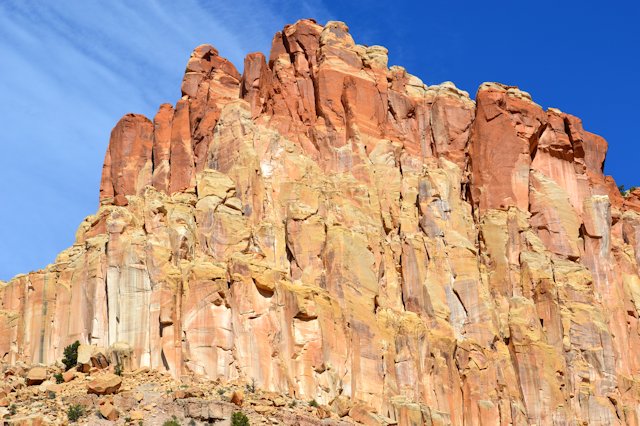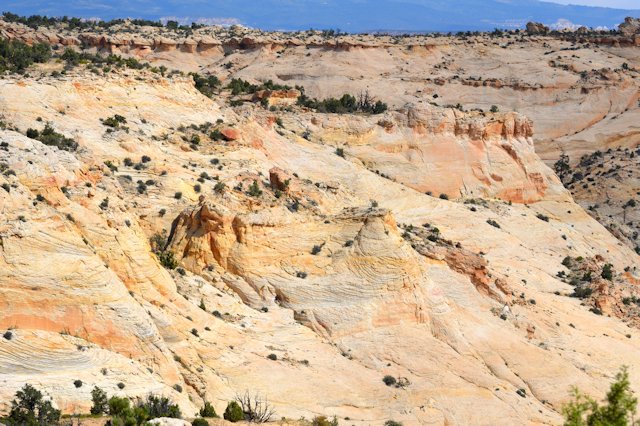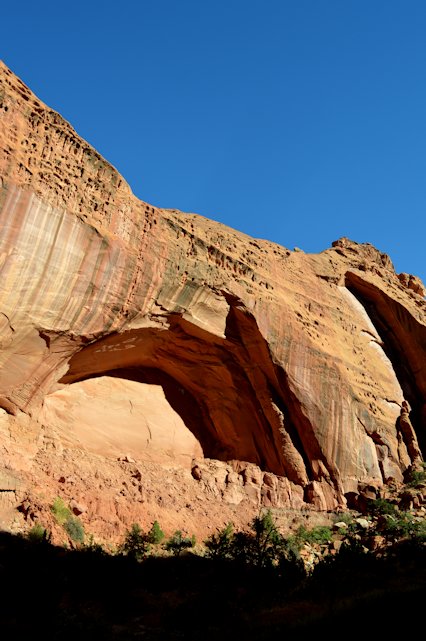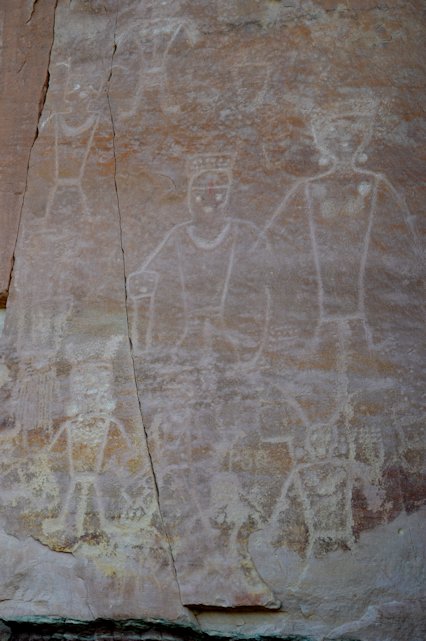While in the “Needles” area we hiked to a couple of interesting places. One is called the Upheaval Dome, which is a huge round depression in the rocky hillside with a large white rock dome in the center. Scientists aren’t totally sure how this round depression formed, but the most accepted theory is a meteor strike. The large white dome in the center is apparently salt. It certainly looks like a meteor depression when we got to the rim and looked down into it.
Another hike we took walked around some large rock formations where the base has washed away from floodwaters, so the rocks have a mushroom effect. We walked under the sides of many of these rocks…it was a little scary to think that the rocks could fall on you…but apparently there hasn’t been a rockfall in a very long time.
Under one of these mushroom rocks is a spring that comes out through the rock. It flows all year long, so there’s a long history of people living in this area. We say some rock walls that were painted by people approx. 1,000 years ago, and also a cowboy camp under a nearby mushroom rock where cowboys had brought in a stove, cupboards, a rail to tie their horses, and a few other items to make the area as comfortable as possible. It sure beat sleeping out in the open with no water!
When we left the Canyonlands park we drove to a nearby state park called the Dead Horse Point State Park. We learned that it’s called Dead Horse because the shape of this mesa, up above the deep river canyons, has a ‘neck’ that’s only 30 years wide leading to a larger mesa end. Cowboys would herd wild horses through this neck onto the mesa end and then block the neck with dead trees making a pen to hold the horses till they could catch them. One time, however, the horses got left there and they all died of thirst, while able to look down the steep canyon walls to the river 2,000 feet below! Awful! The second reason this park is called Dead Horse is that if you stand at the end of the mesa looking down to the river and canyons far below, there’s a whitish rock formation that looks like a horse!
Here are pictures we took of the Cave Springs, the Upheaval Dome and the Dead Horse Point State Park:

